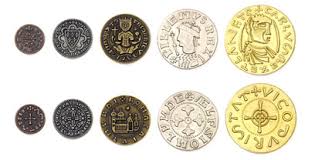I met a person in the Middle Ages and he told me about the social life of the people in the Middle Ages. He told me about the social pyramid. Here the information of my friend:
Royalty
The
Royalty were the highest of the Social Classes in the Middle Ages. The
Royalty included Kings, Queens, Princes, and Princesses. Royals had
complete power over the land and political and economic decisions.
Kings
The King was the highest authority in the land. The King had to make laws, attempt to remove poverty from the Kingdom and take care of the citizens in his kingdom.
Queens
Though they did not often rule alone, Queens played an important part in the Medieval class system. Queens were usually second in command to Kings, and often served as regents when their King was unfit to rule, either because he was sick or considered too young to make intelligent decisions. Queens also served as hostesses and event planners.
After the Royals, Nobility had the most power of the social classes in the Middle Ages. Nobility included hereditary nobility, which were those whose power was bestowed on them through blood relations, and non-hereditary nobility, which included those who rose to power through non-familial means.
Hereditary Nobility
Dukes
The main responsibility of a Duke was to be the ruler of a province. A Duke was also the direct superior of a Count. The Duke was the highest ranking in the nobility. The female equivalent of a Duke was a Duchess.
Non-Hereditary Nobility
Knights
Knights often served as vassals during the Middle Ages. Their primary duty as a vassal was to aid and protect the lord in his army. They also would assist their lord in court and watch over their lord’s manor, keeping an eye on the day-to-day activities of the manor.
Peasants
The lowest social rank in the Middle Ages were the peasants. The peasant class included Freemen, who had some rights and land, serfs, who had no rights, and slaves, who were bought and sold.
Serfs
Serfs had no political power and were not allowed having control of property. They lived on the property of a noble vassal, and, in order to repay the vassal for letting the serf live on his property, the serf worked the land and was at the disposal of the vassal. Serfs were slaves in all but name.
Slaves
Slavery, the practice of buying and selling human workers, was outlawed for much of the Middle Ages, but it was still conducted throughout Europe for most of the time period. Slavery was a favored practice among the Vikings, who took slaves when they invaded and raided new territories.
Popes
For much of the Middle Ages, Popes were the last word in anything to do with the church. Popes had a heavy influence over political and economic decisions as well for a time. However, towards the end of the Middle Ages Popes lost their political power when the Catholic Church came under a lot of scrutiny from the public.
Bishops
After the Pope, the Bishop was the highest ranking official in the church. Bishops were considered to be nobility and were usually very wealthy. They had many responsibilities such as settling annulments of marriages.
This is all the information about the social life in the middle ages.
My friend have to go to a wedding then he give me more information.
See you tomorrow 👍





